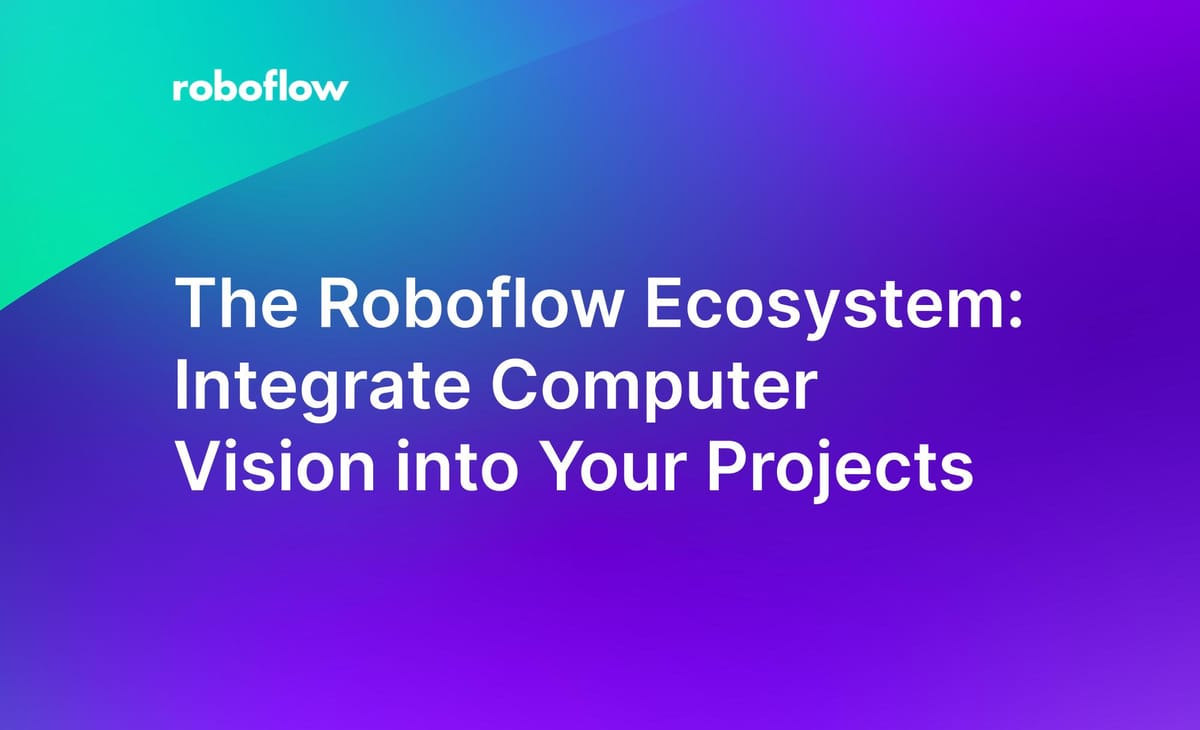
Many developers and machine learning practitioners know Roboflow as their favorite annotation and dataset management tool. But Roboflow is far more than just a tool: it is an end-to-end computer vision platform that provides everything you need to go from images to inference and beyond.
Try as we might, we know that Roboflow will never be the best tool for every user at every piece of the process. That's why a core philosophy of Roboflow from the very beginning has been to be as interoperable as possible.
Building on- and off-ramps at every step of the computer vision workflow by offering powerful, extensible APIs and integrations means you can use Roboflow along with all of your favorite tools.
In this post, we are going to review some of the integration points in the Roboflow ecosystem where you can connect your application to our computer vision platform.
Integration Points
Roboflow's MLOps platform has APIs and integrations available at every step of the workflow and connects with dozens of other useful tools, from annotation platforms like Make Sense and CVAT to deployment devices such as the Raspberry Pi and the NVIDIA Jetson.
Data Collection
You can upload images into Roboflow using the Roboflow Upload API and the Roboflow Python package. Using these methods, you can seamlessly integrate image uploading into applications for sampling data from cameras at the edge for active learning, or piping in data from other sources.
There are example scripts using these APIs for connecting a private bucket to your Roboflow account. Our newly-released open-source Magic Scissors app demonstrates how to pipe data into a Roboflow dataset via a custom app.
We also connect with external data providers like NVIDIA Omniverse, Unity Perception, and Stable Diffusion for obtaining synthetic data.
Annotate
Roboflow Annotate is built into Roboflow a platform through which you can annotate images for object detection, classification, and segmentation tasks.
With that said, you don't need to use Roboflow Annotate to work with our platform. Roboflow supports importing dozens of annotation formats (including those of labeling services like Sagemaker Ground Truth, Scale, and LabelBox) via our UI, our Annotate API, and our python SDK. You can use the annotation tool with which you are most comfortable and bring your data into Roboflow for management, training, and for use in model deployment.
We have deep integrations with CVAT and Make Sense that let you use Roboflow models to enable model-assisted learning. Through these integrations, you can use previous versions of models hosted on Roboflow – and any of the more than 50,000 public models on Universe – to assist you with labelling images. This feature is offered natively in Roboflow Annotate, too.
Analyze
Roboflow's Search and Export APIs make it easy to access your data for analysis in notebooks and other tools. For example, you can use Scikit-learn to do vector analysis on your images' CLIP embeddings, or you can use our search API to build a semantic search engine on top of your datasets.
Train
When it comes to training, Roboflow has an extensive range of options from in-platform AutoML (and API methods to programmatically kick off training in the cloud), dozens of models in our open source model library, and integrations with third-party training tools like Rekognition Custom Labels, Azure Custom Vision, and Ultralytics Hub.
Deploy
Roboflow Deploy is versatile, supporting deploying custom models to a number of platforms including Docker (on Intel, ARM, Jetson, and CUDA-Accelerated NVIDIA GPUs), Luxonis OAK/DepthAI, native iOS, and Tensorflow.js in the browser. This allows tight integration of models into other applications (and, for example, powers our integration with CVAT for their auto-labeling feature).
We are also working behind the scenes with several new partners to expand the places you can deploy with Roboflow. Keep your eyes peeled for more announcements here soon!
Integrate
Roboflow also has a number of helpful tools for utilizing your model's predictions including:
- Utilities for common tasks like counting and tracking;
- Templates for creating the business logic of triggering actions;
- Open source tools;
- A brand new Zapier integration to connect your model with thousands of other apps;
- And more.
How to Get Connected
Roboflow works alongside a number of partners to ensure your data and models are available wherever and however you need them. We're always looking for more connection points & integrations. If you're building a tool that works with Roboflow (or have an idea for one), let us know and we'd be thrilled to help promote it to our audience of over 250,000 computer vision developers!
Cite this Post
Use the following entry to cite this post in your research:
Brad Dwyer. (Mar 31, 2023). The Roboflow Ecosystem. Roboflow Blog: https://blog.roboflow.com/ecosystem/
